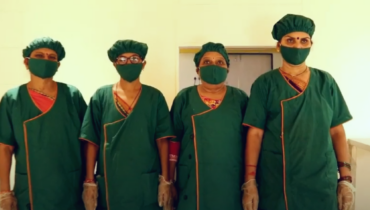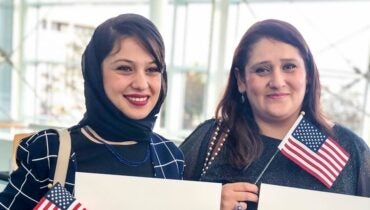This article was originally published on LinkedIn on April 13, 2020.
As Anita Bhatia, Assistant Secretary General at UN Women, recently stated, COVID-19 has dire consequences for the livelihoods and economic security of the worlds’ most vulnerable populations. As under-resourced governments in the developing world grapple with the logistical challenges of issuing cash transfers and securing aid from the IMF, they are in danger of neglecting the acute needs of women hit hardest by the abrupt closure of business. This post seeks to give a working overview of current efforts to provide women in developing countries with the financial relief necessary to weather the economic fallout of COVID-19, and proposes best practices for policymakers tackling these issues.
- Glenbrook Partners found that the governments of Colombia and Brazil are having some success at getting emergency social payments to the most vulnerable populations using digital channels. In Brazil, the government-owned bank Caixa received 11 million requests over two days to open a savings account where emergency assistance funds from the government can be deposited. The intended receivers are informal workers who are being given funds to help cope with the economic effects of COVID-19. Recipients must use an app to access the funds; given that 60% of the adult population in Brazil owns a smartphone, they are expecting high usage of this channel.
- Women’s World Banking found in a recent survey of their network of more than 48 financial service providers in 28 developing markets that many providers are seeing the pandemic environment as a way to challenge accepted practices and explore new digital approaches such as offering voice SMS in local languages, digital loan disbursement, digital savings, and using chat bots for remote customer service.
- And finally, in the realm of government to person (G2P) payments for social protection, which over the past 5 years have begun more often to be delivered digitally, the World Bank finds that 84 countries have reported changes to their programs in response to the crisis. For the 656 million people living in extreme poverty, these payments can be lifesaving. As the authors note, “countries with advanced G2P payment ecosystems are able to push transfers out with lightning speed.”
I was happy to see this critical callout in the World Bank blog: “As countries proceed, emphasis must be placed on ensuring that the digitalization of payments does not lead to exclusion of vulnerable populations, such as those without access to technology, the elderly, the disabled, and people living in remote areas.”
Are we in danger of leaving low-income women even further behind?
Pre-COVID-19 pandemic, the 2017 Global Findex data show that while more and more women are opening bank accounts, a global gender gap of 7 percentage points still exists — reaching 9 points in developing countries, and that this percentage has not moved since 2011. As a result, women still make up 56% of the 1.7 billion unbanked adults. The Middle East and North Africa region shows the largest gender gap — 52% of men in the region have an account, compared with only 35% of women.
It’s not all bad news: countries like China, Colombia, India, Kenya and Mexico show improved results and reduced gaps. As for internet access, the growth in low and middle-income (LMIC) countries has been remarkable in the last 3 years, mainly due to the growth in mobile phone ownership. According to the GSMA 2020 report on the mobile gender gap, 2.9 billion people in 15 LMIC countries now access the internet over their mobiles. However, there is a significant gap in mobile phone ownership and usage between women and men. The GSMA report shows that women are 8% less likely to own a mobile phone in LMICs, down from 10% in previous years. This translates into 165 million fewer women than men owning a mobile. And when it comes to smartphones, women in LMICs are 20% less likely than men to own one.
For mobile internet use, women are 20% less likely to access the internet from mobile than men, although this is down from 27% over the last three years, which translates into an additional 236 million women online. These figures are of especial importance given that mobile is the way in which most people in LMICs access the internet and get vital information from the government and health services (via SMS) and use financial services such as mobile money. 54% of women in LMIC countries now use the mobile internet. The narrowing of the gap was driven primarily by improvement in the figures from South Asia, where the gap narrowed by 16 percentage points. Despite this improvement, these figures mean that 300 million fewer women than men use the mobile internet in these countries.
Will the progress that women have been making over the last three years slow down and the gaps widen? What measures can we put in place to ensure that this doesn’t happen?
We are starting to see calls for a continued focus on gender equality in the pandemic response: at the government level, recently the G7 Gender Equality Advisory Council urged the G7 member states to take into account gendered dimensions of the crisis, to prevent deterioration in the real gains made in women’s rights and gender equality. In 2019 my colleagues and I at the Bill & Melinda Gates Foundation published “Digitize, Direct, Design: Can These Three Principles Help Close the Gender Gap?”
Along with experts in cash transfers from institutions such as the World Bank and Georgetown University’s Institute for Women, Peace and Security, we pulled together evidence and recent insights from around the globe, across social protection and financial inclusion, and developed three core principles for advancing women’s financial inclusion and economic empowerment: Digitize, Direct, Design (D3). By digitizing priority social protection programs, directing the payments into women’s accounts, and designing the program so that they expand women’s opportunities, social protection programs can be leveraged to close the gender gap and advance women’s economic empowerment outcomes.
These principles still hold true: women need their own financial accounts, accessed using their own mobile phones, especially in times of crisis like this, so that they can receive emergency cash transfers, manage their money, and access important information from government and health services in their countries. We need to better design programs and apps so that low-literacy and numeracy women can also access and use vital information and services.
Elizabeth Kellison is the former Gender Lead, Financial Services for the Poor at the Bill & Melinda Gates Foundation.


